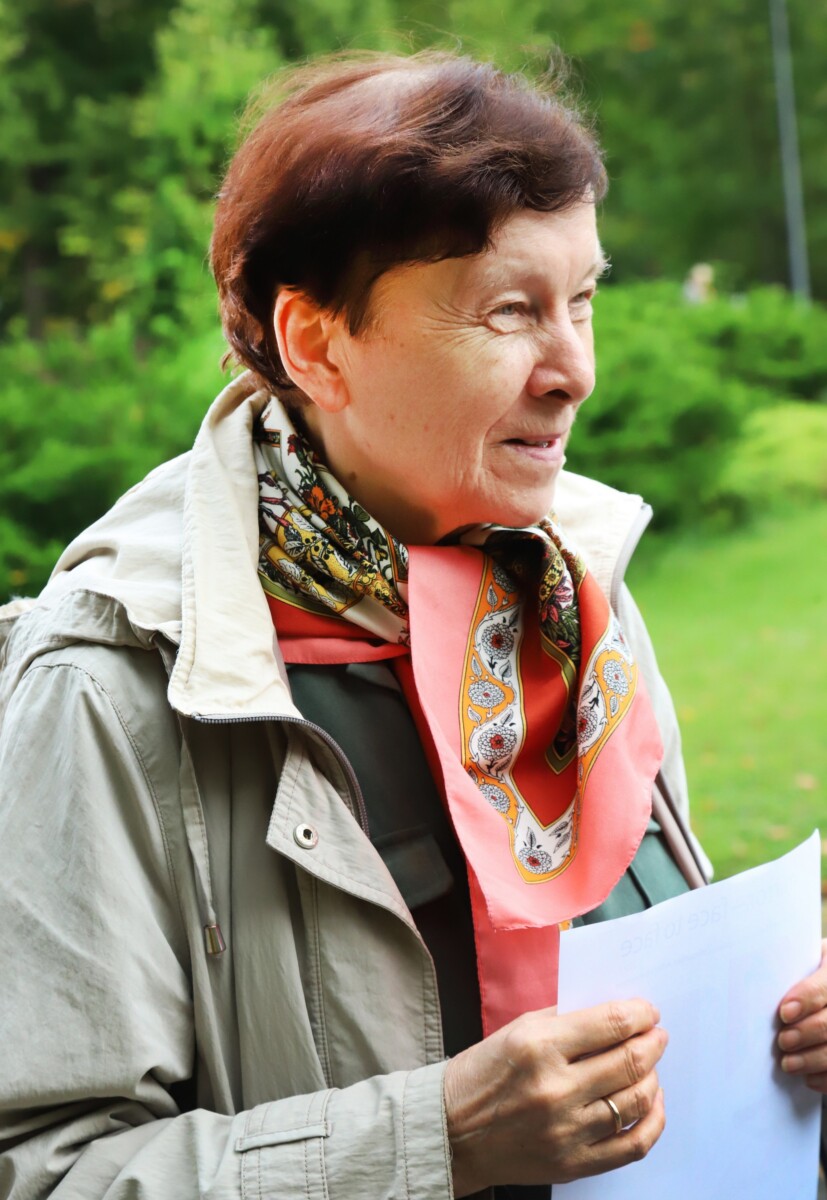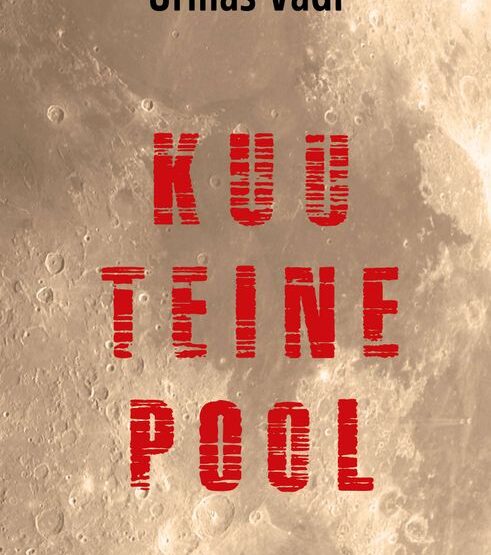There is an overwhelming belief in Estonian literary criticism that we have a fairly large number of talented female poets, but few equally talented female prose writers. Mari Saat (1947) is an exception that proves the rule.
Among the prose writers who debuted in the early stagnating 1970s, Saat was the only woman. Other women writers, her contemporaries, started with poetry. True, they later tried their hand in novels and short stories as well, and some poets of that time have now moved to the centre stage of Estonian prose. Mari Saat seemed to simply skip the phase of writing poetry that is, after all, so natural for a young woman. She started with short prose which revealed similar elements with the work of her contemporaries, as she, too, set her characters in familiar circumstances, simultaneously describing their emotions and perceptions that ‘do not fit’ the world around them. The mind of the characters does not reflect reality, but instead bends it, turning external impulses into deeply personal and singular psychic pictures. More significant than depicting the outer world is her depiction of the inner perception of man, mixed with irrational and revelatory moments. The result is a subjectivised image of life, which introduces modernist features into Saat’s generally realistic prose.
Unlike many of her contemporaries, Saat acquired a non-philological higher education (economy) and has made a career in her field, without wishing to be a ‘pure’ literary person. (Saat might have also been influenced by her husband, the internationally renowned artist Raul Meel.) Between 1970 and 1980 she worked as a researcher at an institute, and since the 1990s has been teaching business ethics at the Tallinn Technical University. Aware of the author’s academic degree, the reader might expect social problems tackled in a rational and analytical manner. Whoever approaches Saat’s work with such expectations will be deceived – but he will not be disappointed in the artistic outcome. Saat as an economist naturally understood the faults of the Soviet economic system better than anyone. The contradictions of that system are tackled, for example, in the novel Laanepüü (Hazel Grouse, 1980), where the protagonist works at an economic research institute, a well-known environment for the author. The novel Õun valguses ja varjus (Apple in Light and Shadow, 1985) offers, through the eyes of the main character, a dismal overview of the mentality on a large construction site. Painful social issues in Saat’s work, however, never become dominant. The story Mida teha emaga? (What to do with Mother? 1978), initially planned as a film script, describes the problems of people who move from villages to town, but even here the treatment of social life does not overshadow the subtle observation of a large family. Saat writes about relationships and family life, but focuses on the manner of human existence in the world and the meaning (or meaninglessness) of existence in general. She is fascinated by existential issues but the characters via whom these issues emerge are a part of very specific surroundings, which are described vividly and in great detail. Their perceptions, dreams and fantasies blend into an indisputably mundane and sensuous fabric of life. The eternal and the sublime are firmly rooted in the daily life. But this is no cause for tragedy: it seems perfectly natural. The feminine aspect of Saat’s work perhaps lies in the way she unites abstract things with mundane existence.
The plots of Saat’s short stories of the 1970s unfold in the conflict between sensible life and that governed by urges, conscious aspirations and suppressed desires. Quite remarkable is the writer’s ability to portray equally convincingly both male and female characters, although she keeps her distance from the characters, as she does not use the first person singular narrative. In the short story Katastroof (Catastrophe, 1973), which received the Fr. Tuglase award and has been translated into several languages, Saat displays keen insight into the life of a young man who is devoted to self-realisation and achieving power. The wavering feelings that direct his relations with two young women threaten to smash his carefully constructed plans. The tale of his development culminates in an act of violence – killing a helpless dog, which could be interpreted as destroying his own ‘feminine’ weakness. Saat’s short prose contains several variations of a character who wants to lead a sensible and ‘normal’ life, but who is powerfully attracted by certain inexplicable irrational forces. Such characters feel a yearning, mixed with fear, for the unknown, which could easily mean the attraction of death. For example, in Udumäe kuningas (King of Foggy Hills), a young man who is trying to build up his life is trapped by inherited alcoholism, and an urge for self-destruction awakes in him. The pictures through which Saat depicts the mysterious spheres of human existence (a cave, a lake in the middle of a forest and a sharp spike) often acquire Freudian shades of meaning.
Mari Saat’s prose is characterised by polarities: life and death, here and beyond, body and soul etc. Her characters feel as if they lived between different worlds, unable to fully join either. They are often connected with both village and town, perceiving the disparity between technocratic civilisation and a way of life close to nature. Saat does not, nevertheless, rigidly oppose town and country; instead she observes them through the eyes of her characters, vividly and truthfully describing forests, fields and urban landscapes, and conveying their changing atmosphere. In order to express abstractions, Saat uses images found in nature, offering various possibilities of interpretation. We cannot, thus, simply state that nature denotes the subconscious or the sphere of purely biological life. In the novel Hazel Grouse (1980) Saat observes town, village and people mainly from the point of view of a young man. The protagonist Mart is, on the one hand, archetypically Estonian – reserved, sceptical, hardworking, with his secret dreams – but, on the other hand, he is quite an atypical man, who cannot always manage important choices. Mart is a country lad who becomes an economist; this allows the author to introduce critical comments on the Soviet way of life, but as said before, these never dominate. The story revolves around Mart’s complicated relations with two women, but the writer never lets it slip into a banal love triangle. One relationship is purely platonic, constituting deep feelings towards an elder colleague, culminating in the woman’s death. This stands in mystical connection with the killing of a hazel grouse by Mart (the word laanepüü in Estonian sounds a bit like the woman’s name) – as if with that act he determined her fate. Mart’s wife Ilma, a highly-strung and ethically sensitive artist, adds to the novel some feminine intuition.
The entire body of work of Mari Saat is influenced by an increasingly prominent topic – man’s mortality. Death is the last and supreme enigma of existence; aspiring to solve it, the writer contemplates the dualism of body and soul, turning to experience beyond the senses, archetypal symbols and dreams. The novel Apple in Light and Shadow (1985) tells the story of the middle-aged construction supervisor Jaan Tamm, from the first indication of death – a dream – to actual death in the orchard at his father’s crumbling farmhouse. This novel also contains numerous subtly nuanced and poetic descriptions of family relations, but mundane situations and people nearly always acquire deeper symbolic meanings, as the protagonist, who does not yet know about his impending death, begins to perceive life differently, seeing the invisible and understanding the concealed side of people around him. Spiritual suffering leads him towards compassionate love and the ideal of perfect goodness, personified by the weird Maarja, who seems to partly belong to the earthly and partly to the world beyond. Maarja, with her obvious religious connotation, is the guide on the man’s path to spiritual maturity. Maarja and death are associated with the main image – “the white, waxy, hiding something essential in its roundness” apple which does not reveal its secret.
Saat’s latest work, the novel Sinikõrguste tuultes… (In the Winds of Blue Heights…, 2000) focuses on the topic of death even more strongly. Her collection of essays published in 2004 is titled Surija üksildusest (The Loneliness of the Dying). In the Winds … is based on a true-life event, the tragic sinking of the Estonia ferry in 1994. This is Saat’s only narrative in first person singular, but she does not use autobiographical material. The narrator is a young woman who loses her partner, the father of her small daughter, in the ferry catastrophe. Her imagination, memories, various feelings and struggle with her grief make up the content of the story. The new topic here is national identity. The protagonist’s mother is Estonian and her father is Russian, while her beloved is Swedish; she is, thus, experiencing a crisis of belonging and tries to find a universal element that connects people across national and generational borders. Saat often lets her characters have experiences with mystical undertones, where the walls between the ‘self’ and the outer world crumble and people perceive unity with eternity. Such brief moments, however, never provide a final answer to the main existential questions. Saat’s characters are tormented, both awake and in sleep, by questions about God and the immortality of the soul. An irrepressible yearning for the ideal and the eternal smoulders in them; they would like to abolish or cross borders that separate opposing sides: light and shadow, body and soul, time and eternity, wakefulness and sleep, nature and man, internal and external world etc. A rigidly dichotomous world-view seems to be totally alien to Mari Saat.
Despite their similar aspirations, Saat’s characters are all vastly different. One of the most peculiar is the main character Eed in the novel Võlu ja vaim (Charm and Spirit, 1990). The title page of the novel has the sub-title The first book. Migrations of animals, but no sequel has so far appeared. The last two decades have not been very fruitful for the writer, as she has mostly devoted her energies to teaching and research work. Charm and Spirit is the story of the development of a peculiar young girl from a remote village in the forest, and is characterised by a remarkable density of psychological insight and a suggestive style. The social background, Soviet Estonia at the time of the ‘thaw’ (1950s-1960s), is delineated with few but eloquent signs of the era. Typically of Saat, Charm and Spirit is primarily a journey of self-perception, seeking one’s deepest identity that remains fairly independent of external circumstances. Perhaps it is a bit paradoxical that although Eed is a ‘child of nature’, she is mostly tormented by the inevitable physical side of human existence and sexuality. She does not want to be man or woman, and the body as such seems ‘low’ to her, in opposition with the mental world. She is amazed by people in the library, “simultaneously reading and stinking”, who resemble sphinxes with the heads of spirits and the bodies of beasts. The dualism of human existence is an unsolvable mystery to her. Eed, with her peculiar attitudes, feels alien in the ‘natural’ way of life; she is not satisfied with the world and yearns to be elsewhere – outside her own body, time and social surroundings. The novel also points out the possibilities of escape: self-realisation by publishing poems that express her real, concealed ‘self’.
Mari Saat’s prose is not really bulky: she has not published a large number of short stories and novels, and the gaps between publications are fairly long. However, without Saat’s psychologically tense works Estonian literature would be much less vibrant. In her prose, the most normal life acquires a poetic colouring and metaphysical dimensions. The generally realistic depiction of people is made more complicated by the characters’ dreams, visions and fantasies, together with relevant associations. Saat herself regards writing as translating subjective images into words, which requires a great deal of effort. It is, however, easy to read her texts. Saat’s style is smooth and flowing, with contours blending into one another as in a watercolour. The narrative proceeds in a peaceful rhythm, with a lot of thoughtful silence. Saat’s sensitive and largely intuitive manner of writing shows her as a ‘feminine’ author, although she certainly does not produce any (stereo)typical women’s literature – her deep philosophical reflection and sharp eye for social backgrounds refer to a ‘male’, rational element in her prose. Her best work exudes harmony between the intuitive and intellectual, the realistic and mystical.
© ELM no 25, autumn 2007




